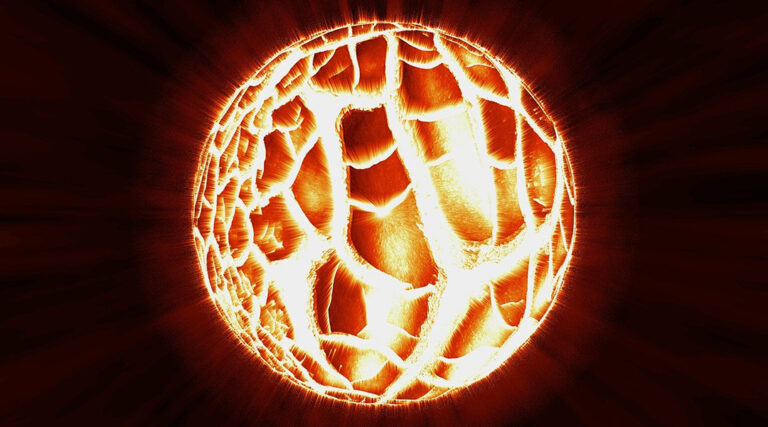Based on the bizarre laws of quantum mechanics, quantum computers are widely regarded as the future of computing and information technology. The quantum nature of their bits, which can exist as arbitrary combinations of 0s and 1s, allows them to solve problems and run certain algorithms orders of magnitude faster than their classical counterparts.
However, to date it has been extremely difficult to build a functional quantum computer. They require specialized equipment and conditions, such as temperatures close to absolute zero, to keep their qubits in their fragile quantum states. As such, they can be prone to errors and don’t tolerate disturbances from the outside environment.
“The key obstacle towards the realization of a scalable quantum computer is overcoming environmental and control errors,” explained Xiangdong Zhang, a professor at the Beijing Institute of Technology, in an email. “Quantum states are highly susceptible to environmental interference, leading to [loss of quantum states] and errors. Until now, there has been no implementation of a practical universal quantum computer.”
But what if quantum computing could be simulated using hardware that isn’t so finicky?
To achieve this, Zhang and his colleagues have proposed a new way to run algorithms previously only considered possible with quantum computers. The idea is to use a system whose operation is based on the much simpler laws of classical physics but with the ability to run algorithms the same way a full-fledged quantum computer would.
A classical switch
Improving on qubit stability by creating them in a classical physical system would allow quantum computers to operate in a wide range of temperatures, humidity, and pressures. This “switch” is made possible by the fact that the Schrödinger equation, which describes the behavior of quantum systems, resembles a set of equations called the Kirchhoff’s equations, which describe how electrical voltage and current work together.
This similarity means that a quantum computer could theoretically be simulated using electrical circuits, throwing out the difficulties brought about by the specialized qubits. One way to do this is using a topological quantum-computing scheme, which was proposed by the team in their study published in Advanced Intelligent Systems.
Topological quantum computers use topological materials, a special type of material that has unique electronic transport properties related to the arrangement of its atoms or electrons. The key is that they can maintain their special properties even under fluctuating conditions, which makes them very promising for quantum computing.
But building a functioning topological quantum computer involves numerous engineering challenges, some of which are beyond our current technological capabilities. Simulating its operation using a much simpler system could be a huge leap forward.
“Various theoretical schemes for building topological quantum computation have been proposed,” wrote the team in their paper. “However, experimental implementation has always been a great challenge because it has proved to be extremely difficult to create and manipulate topological qubits in real systems.”
Mimicking a quasiparticle
The qubits formed in topological quantum computers are not elementary particles, like the electrons, ions, or photons used in some quantum computers, but are instead quasiparticles called anyons. “Topological quantum computation aims to employ anyonic quasiparticles […] to encode and manipulate quantum information in a fault-tolerant way,” added Zhang.
In general terms, quasiparticles are collective excitations of many electrons existing in the bulk of a material, like waves on the surface of a liquid consisting of a huge number of atoms. Anyons have the unique ability to “remember” the trajectory of their motion around one another, allowing them to store memory for use in a topological quantum computing system.
However, manipulating anyons to perform any quantum computation is extremely difficult, which is what makes simulating this process using another system so attractive.
Majorana-like zero modes are a type of quasiparticle that can be used to mimic the behavior of anyons, particularly their braiding properties, which refers to how certain types of quantum particles change their quantum states when they are moved around one another in space.
“Majorana-like zero modes are experimentally the simplest realization of anyons that can non-trivially process quantum information,” wrote the team. “However, the experimental implementation has encountered great challenges.”
The simulation of topological quantum computation requires that the zero modes are braided many times, a feat which is often beyond the capability of known classical simulators.
“Not only do the variable capacitor and inductor need to be precisely regulated at the same time, but also the whole braiding operation needs to be completed in a very short time,” wrote the team. “It is very difficult to accomplish in experiments. How to simulate topological quantum computation experimentally is still an open problem.”
An electronic circuit provides a solution
To solve this problem, the team proposed a unique electrical circuit consisting of the usual components that go into computers, such as resistors and capacitors, that would simulate the functionality of a topological quantum computer while being much more resilient to environmental influences.
“We constructed a resistor–capacitor (RC) circuit instead of an inductor–capacitor (LC) circuit,” they wrote. “In our designed RC circuits, the task can be completed only by adjusting the resistance, without precise adjustment of capacitances and inductances at the same time.”
The team demonstrated that their setup was indeed able to execute computer programs suited to quantum computers, successfully simulating a topological quantum computer. They tested its performance by running Grover’s algorithm, a database search algorithm that other quantum computers have been able to carry out faster and more efficiently than classical computers running on bits composed of 1s and 0s.
Importantly, their setup was tolerant to environmental disturbances simulated by deliberately deviating the voltage in their electrical circuit from the optimal value, ensurung that it continued to work as expected.
In addition, their computer is very compact, measuring only 30×35 centimeters, where IBM’s Quantum System One is about ten times larger. Moreover, while IBM’s quantum computer must operate at milli-Kelvin temperatures (less than -275°C), the circuit developed in the current study can operate at room temperature, opening up space for commercial and industrial applications.
“Since the classical circuit technology is relatively mature, if the quantum algorithms can be realized using electric circuits, it is expected to avoid some problems faced by the quantum schemes, such as scalability,” said Zhang. “[Our] work only proves that effective classical simulation schemes can be implemented. Next, we will explore how to make this type of computer scheme [realizable]. We believe that the time to put into practice will not be long.”
“We believe that the results of our investigation are particularly important for large data information processing, especially in the era of big data where the demand for computing power is urgent,” concluded Zhang. “Based on the present work, constructing practical and robust fast information processing systems to serve society is the future direction.”
Reference: Deyuan Zou, et al., Experimental simulation of topological quantum computing with classical circuits, Advanced Intelligent Systems (2023). DOI: 10.1002/aisy.202300354
Feature image credit: geralt on Pixabay















+ There are no comments
Add yours